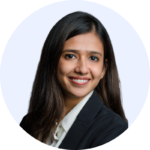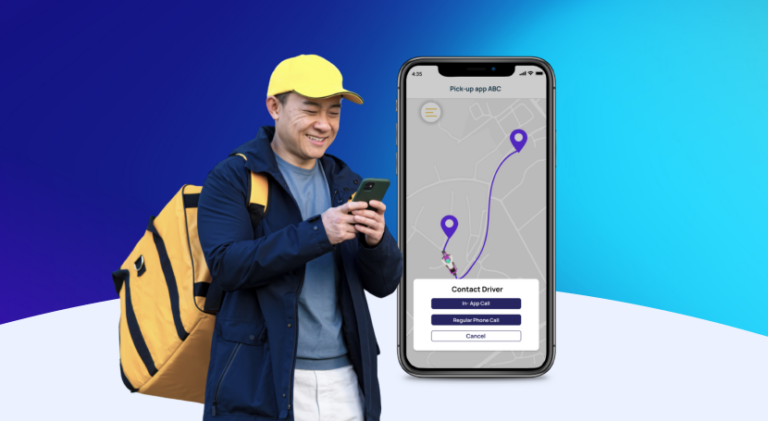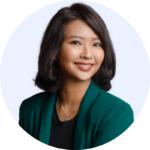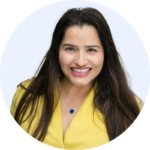By building your own customer experience with Communication APIs, you can improve customer satisfaction and increase productivity.
When it comes to logistics, getting goods from point A to point B is just the tip of the iceberg.
There are now multiple stakeholders involved in delivery, such as drivers, delivery personnel, customers, retailers, warehouses and customer support. Getting them all on the same page in order to deliver a package as quickly and as smoothly as possible requires next-level logistics communication and contact centre support.
That’s where modern Communication Platform as a Service (CPaaS) and Contact Centre as a Service (CCaaS) solutions play an integral role in logistics and delivery services. In fact, it’s not just about delivery efficiency now.
CPaaS and CCaaS are also transforming logistics to deliver improved customer experiences (CX).
In this article, we’ll explore some interesting use cases in how CPaaS and CCaaS are being integrated into the delivery and logistics services we’ve come to rely so heavily on in our daily lives.
1. Maximising customer satisfaction through the power of voice
Want a quick way to elevate customer experience in your delivery service?
Start incorporating voice into your customer communications. When it comes to customer support, in particular the mountain of queries delivery and logistics companies deal with on a daily basis, most of these can be quickly resolved with a simple phone call.
The difference is in how the phone calls are being processed, and what value-adds they now bring to the overall customer experience for a logistics or delivery service provider.
In-app calling
Many enterprises – including those in the logistics and delivery industry – have wised up to the fact that there are tremendous benefits to strategically embedding in-app calling functionality in their apps to add value to the customer experience. This is partly because modern programmable voice APIs can add much more than just basic voice calling functionality within a platform.
For delivery businesses, in-app calling can help immensely in the following areas:
- Creating a less frustrating, more frictionless customer experience. Customers don’t have to exit the app in order to call customer support
- Boost trust with the customer, because with in-app calls, there is a level of trust that the call being made isn’t a scam call
- Improve pick-up rates because of the enhanced trust
- Make voice calls more cost-effective by seriously reducing the price of domestic and international calls used for customer support
- Improve voice call quality factors like having less interference, latency, or drop-outs, which ultimately boosts customer satisfaction levels
WebRTC
For example, customer support can now have direct voice calls with customers through their web browsers.
This is made possible by the fact that all major web browsers use standard protocols and APIs known as Web Real-Time Communications (WebRTC). With WebRTC, customer support can improve their contact centre efficiency by answering incoming phone queries directly from the firm’s website via Click to Call functionality. This way, there’s less need for expensive and complicated on-premise call-routing equipment.
As a bonus, WebRTC empowers the delivery and logistics providers with more complete customer data.
For instance, if a customer has interacted with the delivery provider via click to call on the website, that interaction history can now be integrated along with all the other data points you have on the customer from other touchpoints in your CRM. With a more complete picture of the customer’s history, your contact centre agents are better equipped to resolve phone queries smartly and more efficiently.
2. Simplify delivery scheduling, tracking, and cancellation with text communications
Is it easy for your customers to schedule their shipments, track or cancel them?
If they need to open your website, log in and do all the above manually, there’s an easier way to do that.
Yup – through SMS and in-app chat! Delivering speedy, contextual text communications to customers for delivery arrangements is the first step to building a great delivery experience. If you just allowed customers to manage their deliveries via SMS or chat, it would make things much easier for them, and hence improve your delivery company’s customer experience dramatically.
Using programmable SMS in logistics
In the case of a logistics provider, they can use Programmable SMS (a type of CPaaS implementation) that allows them to easily send notifications at scale for many different scenarios. For example, they can send automated SMS alerts to inform a customer about the status of their package, the estimated time of delivery, or any expected delays.

Get monthly nuggets of wisdom for all things customer experience in your inbox
Some delivery companies also use SMS for two-way messaging communications. Think about this from the customer’s perspective – it’s more flexible and convenient because they can now reschedule the delivery of their package easily via a two-way SMS conversation with the delivery administration.
Using in-app chat during delivery
Let’s say you’re a food or package delivery company who wants to give your delivery personnel and customers the ability to communicate with each other seamlessly. The best way to do this is through in-app chat via your delivery app. Your customers have already made their purchase on your app, so it makes more sense to keep them on the app for your delivery communications. This makes your customer experience more seamless.
Think about it: a pizza delivery man can immediately message a customer that he is caught in a traffic jam, so that they won’t be confused why the pizza has not arrived yet.
Whether a delivery business opts for the SMS or chat route, the main goal here is to give customers full knowledge of the delivery process which simplifies scheduling, tracking and cancellation. With more transparency and simplicity, customers feel more confident and reassured their package will get delivered on time, with less hassle. When logistics providers build more trust and transparency in the way they interact with customers, this can be a powerful way to improve customer experience and boost customer satisfaction.
3. Improving privacy with number masking
For delivery and logistics businesses that have to answer thousands of calls a day, it can be tempting to let delivery personnel speak directly to customers on the phone and let them sort out the delivery arrangements themselves.
But for both customers and drivers, talking on the phone poses a risk to their privacy as they are unnecessarily revealing their personal phone numbers.
Thankfully, communication APIs have a way around this problem – it’s called Number masking. Number masking APIs are a great way to protect the identities of your customers and delivery personnel on in-app voice calls whilst facilitating essential voice communications for delivery operations. The good news is even if your business does not have an app, you can still leverage number masking for delivery via traditional phone calls. By connecting the two parties without having to disclose their real phone numbers, delivery businesses can ensure privacy and security are maintained for all stakeholders.
Bottom line: number masking can help logistics and delivery businesses foster greater peace of mind in their customer experience.
4. Using CCaaS for omnichannel customer experience
Customers and delivery personnel these days don’t just communicate using one channel, like voice calls or SMS.
They prefer to use multiple channels including WhatsApp, Facebook Messenger, and other social chat apps. For a delivery and logistics provider, it is thus important to be able to reach all the stakeholders in the supply chain on their preferred channels effectively so that everyone is on the same page.
An omnichannel approach helps in this regard. With omnichannel Cloud Contact Centre as a Service (CCaaS) solutions, any logistics business can increase customer retention through fast and seamless support. Your customers want to get their issues resolved quickly, and through their preferred channels. Through integrations with your CRM, your agents can securely access and log the necessary information, wherever they are working from and view a 360-degree picture of every customer.
5. Using sentiment analysis in contact centre software
Contact centre platforms now come with sentiment analysis functionality that helps delivery businesses improve engagement outcomes. With real-time insight into a customer’s feelings, an agent can engage a senior supervisor before a situation escalates. Happier delivery customers with higher customer satisfaction levels will be more loyal to your delivery service and hence more likely to use it in future.
Sentiment analysis also empowers logistics businesses to gain deeper insights over time. For example, the tool will be able to give you a clearer picture of which channels tend to have customers with more pressing emergencies such as lost packages – a situation that tends to be highly stressful for the customer. Armed with this information, a delivery business will be able to deploy more resources towards that channel in order to enhance customer satisfaction where it needs improving.
Enhance your logistics customer experience the smarter way
CPaaS and CCaaS solutions continue to deliver a wide array of high-potential, customised offerings for the logistics and delivery industries. Because these solutions are so flexible and scalable, it’s easy to add them to your operations and see results fast.
They also facilitate better communications not just between customers and logistics enterprises, but between every stakeholder involved in the delivery supply chain.
And as we know that supply chains are getting more complicated and longer every day, we see a potentially limitless future for CPaaS and CCaaS implementations in logistics and delivery services.
 Vidhi Agarwal
Vidhi Agarwal 

 Nora Huin
Nora Huin 
 Ana Castrillon
Ana Castrillon 
 V K Sanjeed
V K Sanjeed